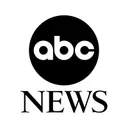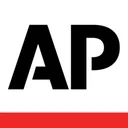SAVE Lawsuits: 4 Options For Borrowers Right Now
Millions of student loan borrowers on the SAVE repayment plan don’t owe payments, but interest will accrue starting Aug. 1 – and borrowers aren’t earning PSLF or IDR forgiveness credit.

Many, or all, of the products featured on this page are from our advertising partners who compensate us when you take certain actions on our website or click to take an action on their website. However, this does not influence our evaluations. Our opinions are our own. Here is a list of our partners and here's how we make money.
Editor's note: This article was updated on July 10, 2025, with news about interest accrual resuming for SAVE plan borrowers starting on Aug. 1.
Lawsuits blocked the income-driven repayment (IDR) plan Saving on a Valuable Education (SAVE) in June 2024, leaving the nearly 8 million federal student loan borrowers enrolled in SAVE with uncertainty more than a year later.
Here are the key facts SAVE borrowers need to know, according to updated Education Department guidance from July 9, 2025:
You don’t currently owe monthly payments. However, you aren’t earning credit toward IDR forgiveness or Public Service Loan Forgiveness (PSLF) during the payment pause.
Interest will start building on your debt beginning Aug. 1, 2025. The Education Department announced on July 9, 2025 that interest accrual will resume for borrowers in the SAVE forbearance. Until this point, the SAVE forbearance had been interest free. Interest won’t capitalize after the SAVE forbearance ends, according to a department spokesperson.
The SAVE payment pause, known as forbearance, could last through the fall or longer. You may not owe a payment until the lawsuits are resolved.
Income recertification deadline extended until early 2026. You won’t need to recertify your income until Feb. 1, 2026, at the earliest. Your servicer will update you with an individual recertification deadline.
Servicers recently began processing some IDR applications. You may switch to one of the other income-driven repayment plans: Pay as You Earn (PAYE), Income-Contingent Repayment (ICR) or Income-Based Repayment (IBR). This would allow you to restart payments and earn PSLF and IDR forgiveness credit again.
Forgiveness under other IDR plans remains temporarily suspended. The department is not processing any IDR forgiveness right now. If you reach the forgiveness threshold under another IDR plan, you'll be placed in an interest-free forbearance.
Experts agree the SAVE plan doesn’t have a future under the Trump administration, but it’s unclear exactly how long the SAVE forbearance will last.
In the meantime, SAVE borrowers have four key options as they determine how to move forward.
Check that your contact information is up to date in both your studentaid.gov and federal student loan servicer accounts. This will help you stay informed of key SAVE updates that may impact your repayment. If you have questions or concerns, call your servicer. The Education Department is also posting updates on this studentaid.gov page.
Take action (or don’t): 4 options for SAVE borrowers during the lawsuits
SAVE borrowers have limited options right now. Timelines are in limbo, and government guidance is subject to change as courts release new decisions.
If you’re enrolled in SAVE or otherwise affected by the lawsuits, you may consider the following four actions:
1. Switch to a different repayment plan
You can earn credit toward forgiveness during this time by switching to an IDR plan other than SAVE. Your current options are IBR, ICR or PAYE. Servicers are processing new applications for these three plans, though expect significant delays — nearly two million IDR applications are stuck in a backlog, as of April 30.
Here’s what you can expect if you apply for an IDR plan right now:
Your servicer may place you in a short-term “processing” forbearance for up to 60 days while it prepares to process your application. During this time, you won’t owe payments, but interest will accrue on your debt. You’ll continue to make progress toward PSLF or IDR forgiveness.
If your application is not processed within 60 days, your servicer will move you to “general” forbearance. You won’t owe payments and interest will accrue starting Aug. 1, 2025. However, you also will not earn credit toward PSLF or IDR forgiveness while in this specific forbearance.
Use the Education Department's loan simulator to estimate what your payments and forgiveness timeline might look like on different IDR plans.
Consider the decision to switch plans carefully. Your monthly payments could increase if you switch plans. The IBR plan also requires a partial financial hardship to apply, which may block higher-income borrowers from enrolling.
Top Student Loan Refinance Lenders
2. “Buyback” forgiveness credit, if you’re eligible for PSLF
Some PSLF borrowers can "buy back" months of PSLF credit for time spent in this lawsuit-related forbearance. You may qualify for the PSLF buyback if each of these apply:
You have an outstanding federal student loan balance.
You have approved qualifying employment for these months spent in the forbearance.
Buying back these months will complete your total of 120 qualifying PSLF payments needed for forgiveness.
» MORE: What is the PSLF Buyback?
To get credit, you must submit a buyback request and make an extra payment of at least what you would have owed under an IDR plan during the month(s) you want to buy back.
This buyback process debuted in 2023; more information is available on studentaid.gov.
You can only apply for the PSLF buyback if you’ve recently completed 10 years of public service. As the SAVE forbearance drags on, more borrowers will become eligible for the buyback. Confirm that you’ve reported all periods of public service employment by using the government’s PSLF Help Tool.
3. Make optional lump-sum or interest-only payments
Interest will start accruing during the SAVE forbearance starting on Aug. 1, 2025. Making interest-only payments can help keep your student debt from ballooning. Once the forbearance ends, you’ll be on the hook for your pre-forbearance loan balance, plus any interest that accrued.
Interest won’t capitalize (be added to your principal balance) when you leave the SAVE forbearance, an Education Department spokesperson said.
However, if you’re pursuing a student loan forgiveness path, like Public Service Loan Forgiveness, think twice before making any extra, optional payments. Any payments you make during the SAVE forbearance won’t count toward loan forgiveness.
4. Do nothing and wait it out
The process of changing repayment plans can be slow and uncertain, and the buyback is only available to qualifying PSLF borrowers.
Given the chaos surrounding the federal student loan system right now, you may consider sitting out until the government updates guidance.
Make the most of this payment reprieve by working on other financial goals, like paying down credit card debt, building an emergency fund or saving for a house or retirement.
If you are already enrolled in the SAVE plan and you do nothing, here’s what you can expect:
You may not owe a payment until the SAVE lawsuits are resolved, but interest will start accruing starting Aug. 1, 2025.
You won’t earn credit toward IDR or PSLF forgiveness for this time.
You’ll likely have to switch to another repayment plan in the next couple of years. Under the recent budget reconciliation bill, borrowers enrolled in SAVE, ICR and PAYE will need to move to either the IBR plan, a modified version of the standard 10-year plan or a new income-driven plan called the Repayment Assistance Plan (RAP) by July 1, 2028
Even if you choose to do nothing, call your servicer to make sure you understand your situation and options moving forward. Check that you are enrolled in the right kind of forbearance.
At this time, there’s no guarantee that borrowers who remain in the SAVE forbearance will retroactively and automatically get IDR or PSLF forgiveness credit once the lawsuits are sorted out.










